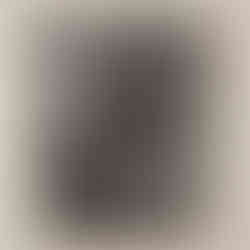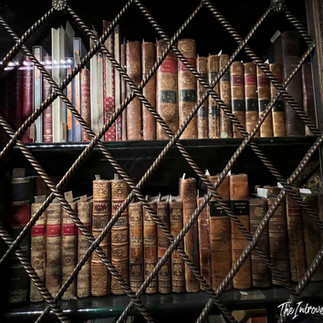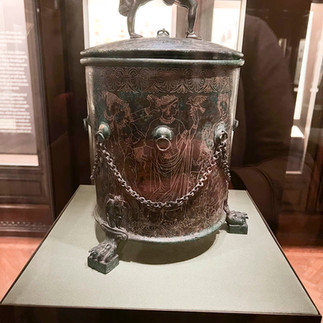The Morgan Library & Museum in New York: A Temple of Bibliomania and Renaissance Art in Modernity
- The Introvert Traveler
- Apr 28
- 6 min read
Updated: Apr 29

Last visit : December 2024
My rating : 10/10
Visit duration : 1 hour
Books are an important part of my life. My father was a collector, and I was lucky enough to grow up in a house where books came "outta the goddamn walls", just to use a cinematic quote out of context; as if that weren't enough, before taking other professional directions, I worked for two years in a historic Italian library that boasted a collection of thousands of incunabula, post incunable, manuscripts. It was therefore inevitable that, when visiting New York, I would include the Morgan Library among my stops.
The Morgan Library & Museum, located in the heart of Manhattan, is much more than a museum: it is one of the most extraordinary cultural institutions in the world, where one man's passion for collecting has transformed into a monument to the written and figurative memory of humanity. Founded by John Pierpont Morgan, one of the most powerful bankers in American history, the library is today an essential point of reference for anyone interested in the history of books, illumination, bookbinding and humanistic thought.
Who was John Pierpont Morgan? The collector, the patron, the bibliophile
John Pierpont Morgan (1837–1913), son of banker Junius Spencer Morgan, was one of the most influential figures in American capitalism. Founder of J.P. Morgan & Co., he financed the largest railroad and steel companies of the time and played a crucial role in American financial stability, intervening personally during the banking crisis of 1907. But alongside the businessman, there was the patron: Morgan was a passionate collector of art, books and manuscripts, to the point of becoming president of the Metropolitan Museum of Art.
His private library, conceived not only as a repository but as a sacred space of knowledge, was built next to his New York residence and is today one of the finest examples of Neo-Renaissance architecture in the United States.
The History of the Morgan Library: From Private Collection to Public Institution
The library was designed between 1902 and 1906 by architect Charles Follen McKim (McKim, Mead & White). The original building is now the heart of the museum complex, flanked by new wings built over time, until the 2006 restoration and expansion by Renzo Piano.
Upon Morgan’s death in 1913, his son J.P. Morgan Jr. opened the collection to the public in 1924, transforming it from a private space into a cultural institution. The library has expanded over time, welcoming new donations, acquisitions, and special collections, to become one of the world’s leading specialized libraries.
The Morgan Library Spaces: Architecture of Wisdom
The library is essentially made up of two main rooms: the Red Study and the East Room; both rooms, in addition to displaying immense wealth, also denote the refined taste of a patron who, in addition to being a great businessman, must have evidently also been a man of considerable culture.
The most famous room is the East Room , a double-tiered library with wooden balconies, frescoed ceilings, stained glass windows and bookcases with wrought-iron grates. The ceilings are decorated with personifications of the liberal arts, in an iconographic cycle that recalls Neoplatonic Wisdom. This room is not lacking in works of art, such as the two beautiful bronze andirons (perhaps by Girolamo Campagna?) that decorate the fireplace, but in this room the book plays the leading role. In addition to some selected treasures on display in the display cases, such as the Gutenberg Bible, it is possible to admire the vast collection contained on the shelves, composed of countless ancient editions; observing the collection, it is natural to ask how much it reflects the actual interests of JP Morgan, or rather those of the curator of his library (Belle da Costa Greene), how much it was the pursuit of a cultural interest and how much it was the speculative investment of a man with essentially unlimited spending power. Among the titles that struck me were a particularly rich collection of works by Anatole France (understandable for a bibliomaniac, but not exactly a prominent author, at least nowadays) as well as a very rich collection of works by Voltaire.

Adjacent is the Red Studio, Morgan's private living room, where the dim light, the damask velvets and the Renaissance furniture create the atmosphere for the exhibition of some valuable works of antique collection; JP Morgan must have evidently been a lover of the Italian Renaissance, because his collection was concentrated, selectively, on Tuscan and Umbrian production between the mid-1400s and the beginning of the 1500s; one can thus admire works attributable to the circles of artists such as Antonio Rossellino and Donatello, Perugino, Botticelli, Michelozzo, Giovanfrancesco Rustici. I understand that the Morgan collection also includes a work by Cima da Conegliano, which I did not see during my visit.

Another small room displays some archaeological finds of undoubted value including a beautiful Etruscan cist .
The Treasures of the Library: Valuable Books and Manuscripts
Among the masterpieces of the book collection, the following stand out:
The Gutenberg Bible (1455): One of 49 surviving copies (only 21 complete). Printed by Johann Gutenberg in Mainz, it is considered the first book with movable type in the West. The Morgan owns three copies , one on parchment and two on paper, one of the largest collections in the world. Other copies are in the British Library, the Library of Congress, and the University of Goettingen. A complete copy can be worth over $35 million.
Autograph manuscript of "A Christmas Carol" (1843) by Charles Dickens: draft with handwritten corrections, which testifies to the creative process of the writer. The text is accompanied by editorial notes and cuts that illustrate his working methodology.
Lindau Gospels (ca. 880): Carolingian gospel book with chased gold and gemstone cover, probably made in Saint Gall. The binding is a masterpiece of medieval goldsmith art.
Gospel Book of Judith of Flanders (1051–1064): decorated with Christ in Majesty and Crucifixion, framed by a blaze of gems. Commissioned by one of the most powerful women in Romanesque Europe, it testifies to the centrality of women in book patronage.
Medieval bestiaries , including the "Bestiaire d'amour" by Richard de Fournival (13th century), which fuses allegorical zoology and amorous discourse in a refined and cultured narrative.
Carolingian Gospel books from Tours and Saint-Martin, dated 800-850, with historiated initials and gold leaf, rare examples of imperial book production.
The Art of Bookbinding
The Morgan Library holds over 1,000 examples of rare or unique early bindings, many of which are documented in key corpuses of specialized bibliography, such as Foot, Mirjam M., The Henry Davis Gift. A Collection of Bookbindings , British Library, or Hobson, Anthony, Humanists and Bookbinders . In particular, the Morgan collection is notable for the presence of numerous volumes with bindings made by workshops identifiable or attributable to well-known masters, such as Claude de Picques, Jean Grolier (the great French bibliophile and patron), Thomas Mahieu, Nicholas Eve, and the royal binderies for Henry II and Louis XIV.
Among the most significant collections is the extraordinary collection of Italian bindings from the 15th and 16th centuries, many of which come from ancient humanist libraries. The Morgan holds examples of the so-called Roman binding , characterized by dry geometric decorations on dark leather boards, as well as rare Venetian gilded bindings on parchment, linked to the diffusion of classical texts printed by Aldus Manutius.
Among the masterpieces, a binding attributed to the workshop of the Strozzi family, a family of Florentine bankers, stands out, which testifies to the interest of the Tuscan nobility in ancient sciences and their material incarnation in volumes of absolute formal elegance.
The institute has developed one of the most advanced digital platforms for consulting ancient bindings, accessible through the official website ( https://www.themorgan.org ), with high-resolution images, detailed bibliographical notes and cross-references with similar collections (British Library, Bibliothèque nationale de France, Herzog August Bibliothek); in general, since the Morgan Library is in all respects, in addition to a museum and a library, a real cultural institution, the site is particularly well-kept with high-level content, from the digitizations of some of the most valuable books in the collection (including the Gutenberg Bible, but I would also like to point out, for example, a beautiful Apocalypse of St. John illustrated with Gothic-style woodcuts), to the collection of drawings and prints, including 500 prints by Rembrandt.
Miniature and Illustration: From Romanesque to Gothic
The display cases display illuminated sheets extracted from liturgical and biblical manuscripts. Particularly suggestive:
Leaves from a French Bible moralisée , with simultaneous narration in sequential panels.
12th century English miniatures with gold backgrounds and polychrome architecture.
Spanish psalters with Mozarabic and Arab influences.
Beyond the West: The Book as a Universal Sacred Object
The Morgan also houses a selection of oriental codices. Among the most relevant:
Amitābha Sutra (China, ca. 1715): written in gold characters on a blue background, it features a miniature painted on a bodhi tree leaf, symbol of Buddhist enlightenment. The work is bound in silk brocade and demonstrates how even in the Far East the book was perceived as a relic and visual mandala.
Calligraphed Islamic manuscripts , including portions of the Qur'an and scientific treatises in Naskh and Kufic script, from Persia, Egypt and Turkey.
Final Considerations
If you are a bibliomaniac, or simply passionate about the history of books, the Morgan Library is a treasure chest of art and book history that will leave you speechless, a temple of bibliomania, a sanctuary of thought, where you learn that true culture is not accumulation, but elevation... but that in earthly life, if while you elevate yourself you are also able to accumulate it is much more fun.
























































Comments